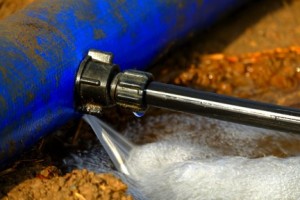Beating Pipes at Their Own Game

Beating Pipes at Their Own Game
There are well over one million miles of pipes running beneath our streets and the majority of them are approaching ‘old age’. All throughout the country, the decaying drinking water systems that were built around the time of World War II and earlier are in need of replacement, not just the simple repairs most cities resort to.
Broken water mains and leaking pipes are often on the news in any town or city. But why aren’t cities getting to the pipes fast enough? This is mainly due to the fact that it’s hard to know the state of a structure when it’s found underground and the city has to dig it up to know if it is in need of repairs. Also, the cost of replacing potentially every pipe in the country could cost as much as $1 trillion or more. With a city budget to consider, city planners have a hard time putting a price on the situation when there is no way of knowing when the pipes will give out.
Corrosion is the main reason for leaking or broken water mains but it’s hard to detect. When it comes to determining what it means to have an ‘old’ water infrastructure, there are multiple influencers:
Piping material
There are numerous piping material options in water infrastructure, ranging from wood to polyethylene. Knowing this, each material has its own lifespan and features. For example, PVC piping doesn’t even corrode while ductile iron does, but is often lined in order to slow down possible corrosion.
Climate
While a large portion of the nation’s water infrastructure is now a century old, elements such as extreme temperatures can speed up the corrosion process. With the ground constantly freezing and thawing, the pipes themselves take on the strain that this causes, allowing them to age quicker.
Amount of times tapped into the main
Anytime you tap into the water main, you leave it vulnerable to corrosion or cracks. Water works manufacturers such as A.Y. McDonald offer repair clamps and service saddles that, when used properly, should minimize this possibility.
With the aging water infrastructure having nearly reached its limit, cities must be there to pick up the pieces. According to infrastructurereportcard.org, there are an estimated 240,000 water main breaks per year in the U.S. By replacing necessary parts before the pipes make that decision for us, the country as a whole will be able to save money and water, thus transforming the current water infrastructure for the better.
